Digital Pollution Tax: Can It Save Data Centers?

TL;DR: Iron fertilization—adding iron salts to ocean waters to trigger phytoplankton blooms—could sequester billions of tonnes of CO₂ annually, but experiments reveal a troubling trade-off: while blooms absorb carbon, much is recycled back to the atmosphere, and unintended effects include toxic algal blooms, oxygen-depleted dead zones, and disrupted food webs. International treaties restrict large-scale deployment, yet enforcement gaps and geopolitical tensions persist. As climate urgency mounts, iron fertilization exemplifies humanity's dilemma: a powerful geoengineering tool that promises climate relief but demands rigorous governance, transparent research, and ethical humility to avoid turning a potential solution into an ecological Pandora's box.
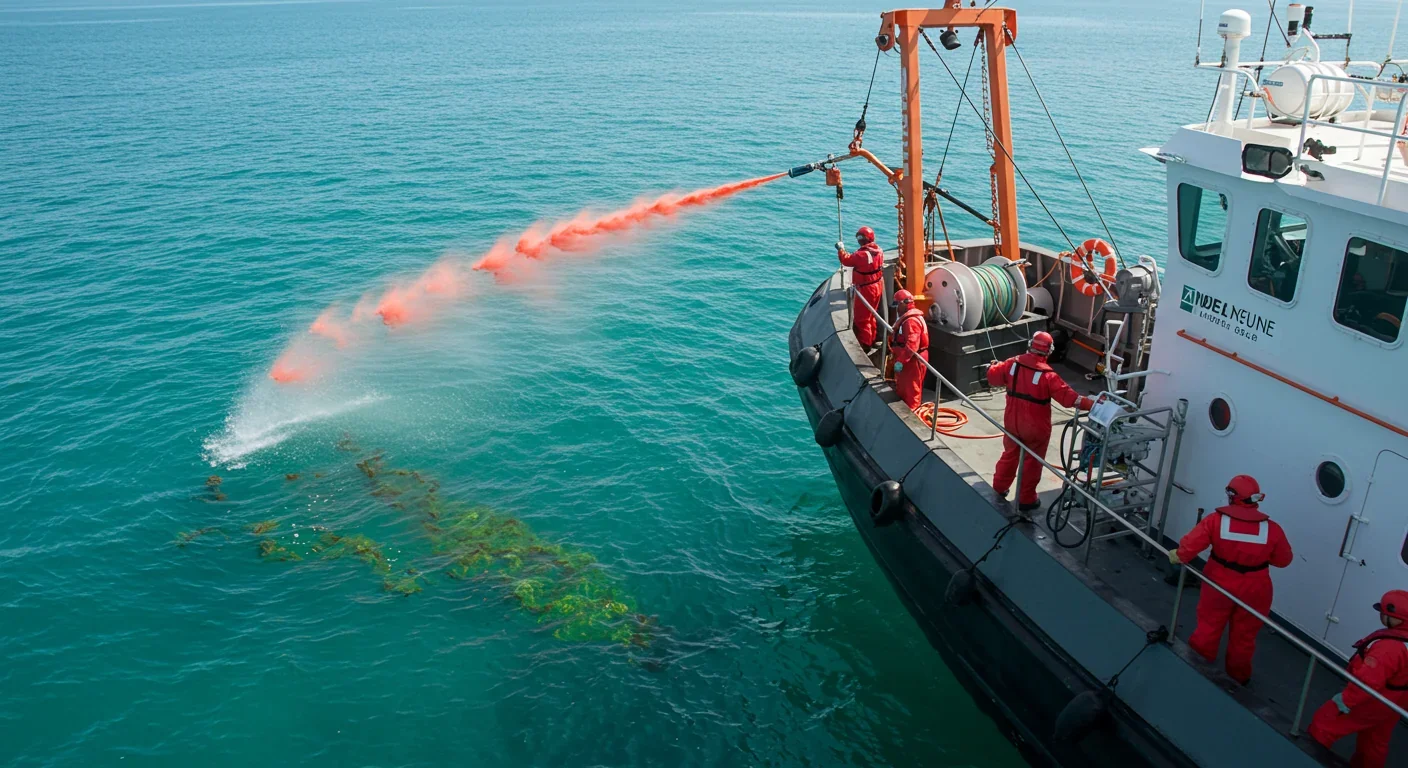
By 2030, scientists predict that marine carbon dioxide removal could sequester up to 2–4 gigatonnes of CO₂ annually—roughly equivalent to the emissions of every car in Europe and North America combined. At the heart of this audacious promise lies a deceptively simple idea: add a half-tanker of iron to the ocean and you could trigger an ice age. This provocative claim, made by pioneering oceanographer John Martin in the 1990s, set off decades of experiments, controversies, and a geopolitical chess game that continues today. Iron fertilization—the intentional seeding of ocean waters with iron salts to stimulate massive phytoplankton blooms—promises to turn the sea into a living carbon vacuum. Yet beneath the surface of this geoengineering strategy swirls a Pandora's box of ecological risks, international legal battles, and ethical dilemmas that could reshape how humanity confronts climate change.
The iron hypothesis emerged from a puzzle that had confounded marine biologists for decades: why do vast stretches of the Southern Ocean, rich in nitrogen and phosphorus, remain biological deserts? The answer, John Martin discovered, was iron—a trace element so scarce in these High Nutrient, Low Chlorophyll (HNLC) regions that phytoplankton simply couldn't bloom, despite an abundance of other nutrients. Iron is essential for photosynthesis, acting as a cofactor in the enzymes that fix atmospheric CO₂ into organic matter.
When the first large-scale experiment, IronEx I, dissolved 445 kilograms of iron sulfate near the Galápagos Islands in the early 1990s, phytoplankton levels tripled within days. Subsequent experiments—IronEx II, SOFeX, and LOHAFEX—confirmed the effect: adding iron to iron-poor waters can increase photosynthesis in phytoplankton by up to 30 times. Autonomous Carbon Explorer floats deployed during SOFeX in 2002 recorded a fourfold increase in plankton biomass and measured particulate organic carbon sinking below 100 meters at rates that startled researchers. For every atom of iron added, phytoplankton carried between 10,000 and 100,000 atoms of fixed carbon into the deep.
This discovery fundamentally changed the climate conversation. If iron limitation could be relieved across the 25 percent of the ocean surface classified as HNLC, humanity might have a scalable tool to drawdown gigatonnes of CO₂. More than a dozen open-sea experiments since 1994 have tested this idea, adding up to 4 tonnes of iron per trial and observing immediate surface CO₂ drawdown. Yet the long-term fate of that carbon—and the broader ecological consequences—remain fiercely debated.
Humanity's desire to manipulate the ocean for economic or environmental gain stretches back centuries. Fishermen have long understood that nutrient upwelling drives productive fisheries; whaling nations decimated whale populations partly because whale excreta naturally fertilized plankton blooms that fed entire food webs. In the 20th century, large-scale agricultural runoff inadvertently "fertilized" coastal waters, triggering harmful algal blooms and dead zones—an unintended geoengineering experiment with catastrophic results.
The deliberate engineering of marine ecosystems took a new turn in the 1990s with iron fertilization. The technology itself is straightforward: dissolve iron sulfate in acidified seawater, spray it from ships over a 100 × 100 kilometer patch, and watch the ocean turn green. But the simplicity of the method belies the complexity of the ocean system. Unlike terrestrial ecosystems, where trees lock carbon in wood for decades, phytoplankton live for days. When they die, most are consumed by zooplankton or decomposed by bacteria in surface waters, releasing CO₂ back into the atmosphere. Only about 1 percent of surface production naturally reaches the seabed; the rest is recycled in what oceanographers call the "microbial loop."
History offers cautionary tales. The Dust Bowl of the 1930s showed how disrupting natural nutrient cycles can trigger cascading ecological failures. The introduction of kudzu in the American South, intended to prevent erosion, created an invasive nightmare. Iron fertilization sits at this crossroads: a technology that mimics natural processes (dust deposition from deserts naturally fertilizes the ocean) but at scales and speeds evolution never anticipated.
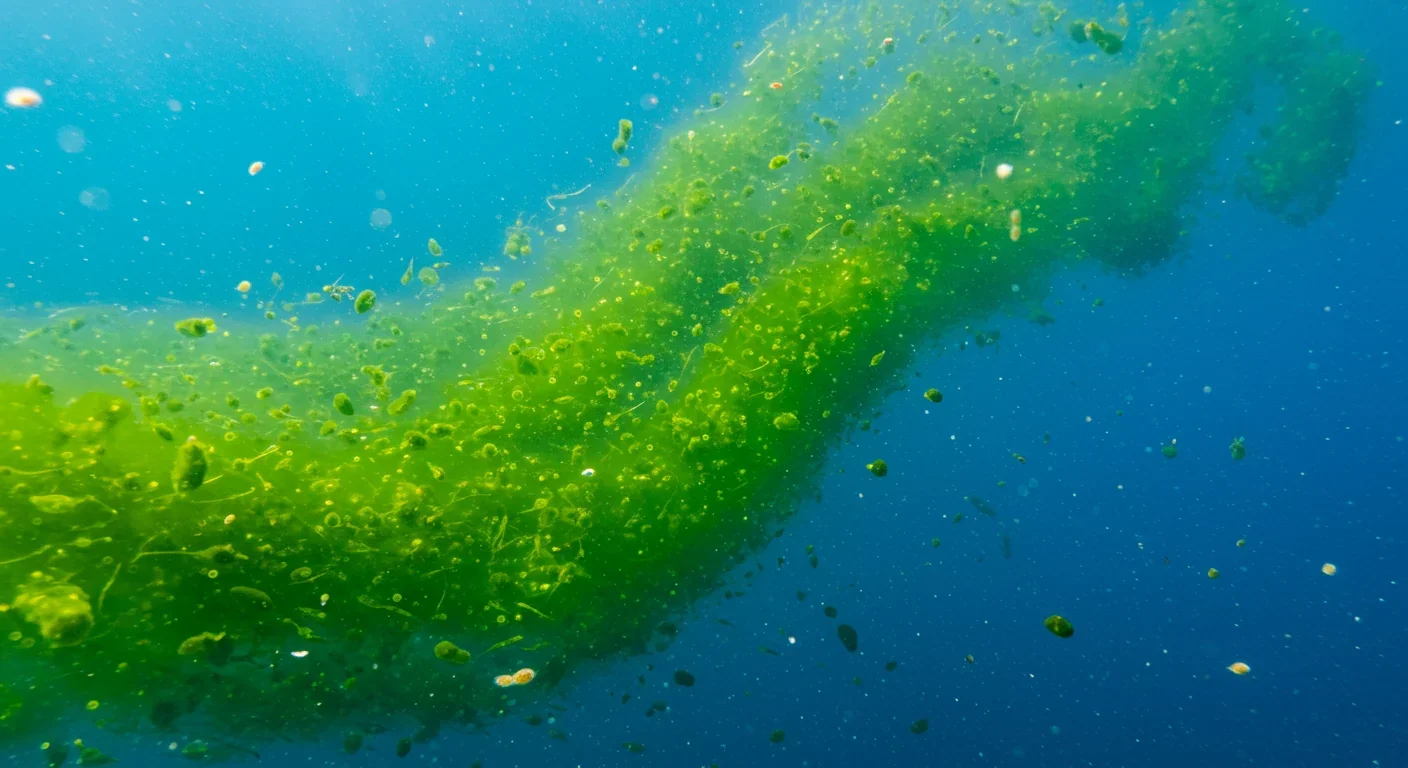
To understand iron fertilization, picture phytoplankton as microscopic factories. Like all plants, they use sunlight, water, and CO₂ to produce sugars through photosynthesis. But they also require a suite of nutrients: nitrogen, phosphorus, and trace metals like iron, zinc, and manganese. In HNLC regions—covering roughly a quarter of the global ocean—macronutrients are abundant, but iron is virtually absent. Without iron, the photosynthetic machinery stalls.
Iron's role is biochemical. It sits at the heart of ferredoxin and cytochrome enzymes that shuttle electrons during photosynthesis and respiration. A single iron atom enables thousands of carbon fixation reactions. When iron sulfate is added to seawater, it dissolves into bioavailable ferrous ions (Fe²⁺) that phytoplankton can absorb. Within hours, chlorophyll concentrations spike; within days, satellite images reveal turquoise blooms spanning thousands of square kilometers.
But not all blooms are equal. The LOHAFEX experiment in 2009 fertilized a 900 km² area with 6 tonnes of iron sulfate. The resulting bloom was dominated by small, slow-sinking phytoplankton with silicate-poor shells. Grazing by copepods and krill consumed much of the biomass before it could sink. Only about 20 percent of the carbon fixed during the bloom reached depths below 200 meters—the threshold for "export production" that might sequester CO₂ for decades or centuries. By contrast, the SOFeX experiment, conducted in silicate-rich waters, produced diatom-dominated blooms with heavier, faster-sinking cells, achieving export efficiencies closer to 30 percent.
The "centennial tonne" metric—defined as 1,000 kg of carbon isolated from atmospheric contact for at least 100 years—has become the gold standard for evaluating sequestration. Recent techno-economic analyses estimate that first-of-a-kind (FOAK) iron fertilization deployments could achieve a levelized cost of carbon (LCOC) around $200 per tonne of CO₂ removed, with a sensitivity range from $25 to $53,000 depending on monitoring costs, nutrient robbing (where fertilization in one region depletes nutrients downstream), and losses from ventilation and nitrous oxide production. Crucially, oceanographic parameters—export efficiency, sinking rates, remineralization depth—dominate cost uncertainty far more than engineering parameters like ship deployment or iron synthesis.
If iron fertilization could be scaled, the societal impacts would ripple far beyond oceanography labs. At the upper end of model predictions, continuous basin-scale fertilization of the Southern Ocean could sequester 2–4 gigatonnes of CO₂ per year—roughly 5–10 percent of current global emissions. That's comparable to replacing every coal plant on Earth with renewables, or planting a trillion trees. For climate-vulnerable nations facing existential threats from sea-level rise, iron fertilization offers a tantalizing prospect: a relatively low-cost, scalable intervention that doesn't require overhauling energy infrastructure or negotiating emission cuts with reluctant superpowers.
But the technology also reshapes geopolitical power. Nations with large exclusive economic zones (EEZs) in HNLC waters—Chile, Argentina, Australia, New Zealand—could unilaterally deploy iron fertilization, creating carbon credits or boosting fish stocks (iron blooms can increase primary production that feeds commercial fisheries). This raises thorny questions of sovereignty and justice: should a country that contributed minimally to historical emissions be allowed to monetize ocean fertilization? Should landlocked nations in the Sahel, whose dust naturally fertilizes the Atlantic, claim a share of any carbon credits?
The job market implications are equally profound. Large-scale iron fertilization would require fleets of specialized vessels, autonomous underwater vehicles for monitoring, satellite remote sensing infrastructure, and legions of oceanographers, data scientists, and regulatory specialists. A 2025 techno-economic analysis projected capital expenditures of $120–160 million for a 14-vessel deployment, with annual operating costs in the tens of millions. If iron fertilization becomes a pillar of net-zero strategies, it could spawn a marine carbon removal industry employing hundreds of thousands worldwide—or it could collapse under the weight of ecological disasters and legal prohibitions, leaving investors and workers stranded.
Culturally, iron fertilization challenges our relationship with nature. For millennia, the ocean has been humanity's ultimate commons—vast, self-regulating, beyond human control. Fertilization crosses a Rubicon: it asserts that we can and should manage planetary biogeochemistry. This shift echoes the Green Revolution's transformation of agriculture, which fed billions but also depleted aquifers, eroded soils, and concentrated power in agrochemical corporations. Will ocean fertilization follow a similar arc, delivering climate benefits at the cost of ecological homogenization and corporate capture?
Proponents argue that iron fertilization offers a rare win-win-win: climate mitigation, ecosystem restoration, and food security. Consider the climate benefits first. Unlike solar radiation management—another geoengineering approach that reflects sunlight to cool the planet but does nothing to reduce CO₂—iron fertilization actively removes carbon from the atmosphere. Model simulations suggest that even modest improvements in monitoring, reporting, and verification (MRV) automation could drop the lower bound of LCOC to well under $100 per tonne, making it competitive with direct air capture and afforestation.
Beyond carbon, iron fertilization can boost fisheries. Phytoplankton are the base of the marine food web; more phytoplankton means more zooplankton, more forage fish, more tuna, more whales. The controversial 2012 Haida Gwaii experiment, which dumped over 100 tonnes of iron-rich dust into the Pacific, was explicitly marketed as salmon restoration. Proponents claimed the resulting bloom would feed salmon fry and reverse collapsing fisheries. While the carbon sequestration claims were dubious (a 2017 Nature review found no evidence of effective sequestration), the bloom did persist for months, and anecdotal reports suggested improved salmon returns the following year.
Iron fertilization may also produce non-carbon climate benefits. Phytoplankton release dimethyl sulfide (DMS), a sulfur compound that, once in the atmosphere, seeds cloud formation. Increased cloud albedo over the Southern Ocean could reflect sunlight and cool the planet—a secondary geoengineering effect that models are only beginning to quantify. The SOFeX experiment in 2002 recorded a fourfold increase in DMS concentrations within the fertilized patch, hinting at this mechanism's potential.
Finally, advocates frame iron fertilization as mimicking nature. During the last ice age, higher dust deposition from exposed continental shelves delivered massive iron fluxes to the Subantarctic Ocean, driving elevated nitrate consumption and organic carbon export—processes recorded in sediment cores spanning tens of thousands of years. If glacial iron fertilization helped regulate Earth's climate, why shouldn't humanity replicate it to counter anthropogenic warming?
Yet for every promise, iron fertilization carries a shadow. The most immediate risk is harmful algal blooms (HABs). While most phytoplankton are benign, some species produce potent neurotoxins. Pseudo-nitzschia, a diatom genus common in iron-enriched waters, synthesizes domoic acid, which causes amnesic shellfish poisoning in humans and mass die-offs in marine mammals. A 2010 study published by UC Santa Cruz found that iron additions during experiments in 1995 and 2002 triggered Pseudo-nitzschia blooms and persistent domoic acid contamination in the open ocean—an environment previously thought safe from such toxins. Lead author Mary Silver warned, "Any iron input might cause a bloom of the cells that make the toxin." If large-scale fertilization inadvertently creates toxin hotspots, it could devastate fisheries, poison seafood supplies, and trigger cascading food web collapse.
Oxygen depletion is another danger. When massive blooms die, bacterial decomposition consumes dissolved oxygen, creating hypoxic or anoxic "dead zones." The LOHAFEX experiment observed hypoxic cores in the bloom's aftermath, with oxygen levels plummeting below 2 mg/L—lethal to most marine life. If fertilization is applied continuously over decades, it could expand existing oxygen minimum zones, particularly in the already-stressed Eastern Pacific and Arabian Sea, turning productive waters into biological wastelands.
Then there's the carbon accounting problem. While surface blooms draw down CO₂, a significant fraction—often two-thirds—is recycled back to the atmosphere within 50 years. The rest may reach the deep ocean, but even there, processes aren't permanent. Bacterial remineralization, zooplankton vertical migration, and ocean circulation can return sequestered carbon to the surface on centennial timescales. Moreover, enhanced microbial activity in fertilized waters can increase emissions of nitrous oxide (N₂O), a greenhouse gas 300 times more potent than CO₂. Studies estimate that N₂O offsets could negate 5–15 percent of the carbon removal benefit, making iron fertilization a mixed-effects strategy.
Nutrient robbing compounds the problem. Iron fertilization in one region can deplete downstream nitrogen and phosphorus, starving ecosystems thousands of kilometers away. A 2020 MIT study using a three-box ocean model concluded that "iron fertilization cannot have a significant overall effect on the amount of carbon in the ocean because the total amount of iron that microbes need is already just right." The ocean's ligand chemistry—organic molecules that bind and regulate iron availability—has evolved over eons to balance nutrient distribution. Adding excess iron would deplete essential macronutrients, destabilizing food webs and potentially reducing global ocean productivity.
Ecologically, fertilization may favor fast-growing, low-quality species over slow-growing, nutrient-dense ones, degrading trophic transfer efficiency. If blooms shift from silica-rich diatoms to silica-poor haptophytes, the carbon that does sink may be less efficiently transferred to higher trophic levels like fish and seabirds. The Haida Gwaii experiment saw increased domoic acid concentrations along the northern coast of Haida Gwaii in late 2012, raising alarms about persistent toxin contamination. Critics alleged violations of the UN Convention on Biological Diversity and the London Convention on the Dumping of Wastes at Sea, both of which impose moratoria on large-scale geoengineering experiments.
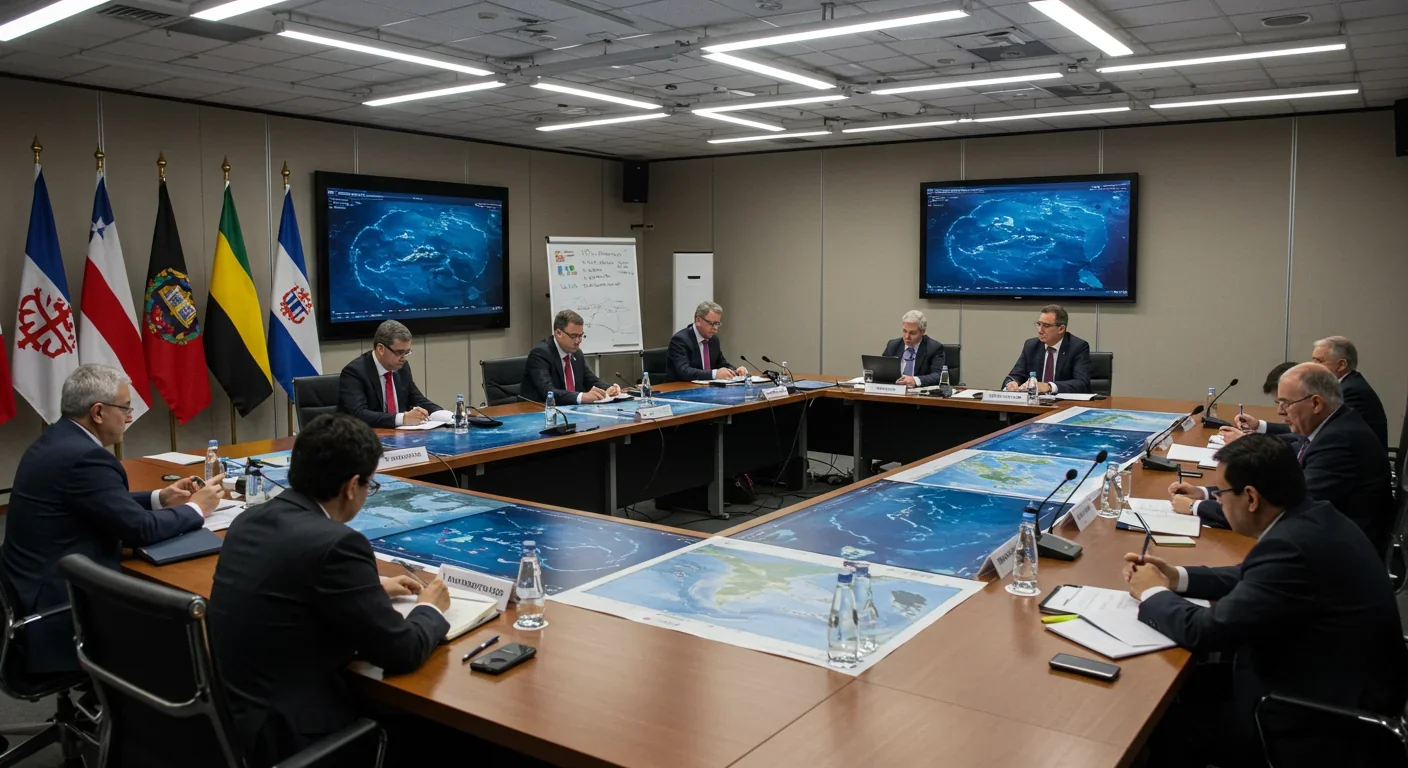
International governance of iron fertilization is a patchwork of treaties, resolutions, and voluntary frameworks that reflect deep geopolitical divides. In 2008, the London Convention and London Protocol adopted Resolution LC-LP.1, stating that "ocean fertilization activities other than legitimate scientific research should not be allowed." This was followed in 2010 by an assessment framework requiring environmental impact assessments, risk management plans, and monitoring for any proposed research. In 2013, parties adopted an amendment designating ocean fertilization as a regulated activity, requiring permits for research and prohibiting deployment without authorization.
Yet enforcement is weak. The 2013 amendment has been ratified by only six of 55 parties (Estonia, Finland, Germany, Netherlands, Norway, UK) and has not entered into force. The resolution is explicitly non-binding, meaning national laws and interpretations largely dictate permissibility. This legal vacuum creates uncertainty: researchers, developers, and investors lack clear guidelines, potentially hindering responsible innovation—or enabling rogue actors.
The Convention on Biological Diversity (CBD) imposed its own moratorium in 2008, reaffirmed at COP16 in 2024. The CBD decision states that "no geoengineering activities should be allowed unless there is robust scientific justification and appropriate consideration of environmental risks and broader social impacts." Crucially, the moratorium excludes any commercial purpose, including carbon offsetting schemes, directly impacting voluntary carbon markets that might otherwise fund fertilization trials.
Meanwhile, enforcement gaps persist. Data aggregated by the Heinrich Böll Foundation and ETC Group show that at least 598 outdoor geoengineering trials have been proposed since 1971, with over half between 2019 and 2023. Marine CO₂ removal experiments quadrupled in that period, suggesting that restrictive frameworks are failing to contain experimental proliferation. The 2012 Haida Gwaii experiment, led by entrepreneur Russ George, proceeded without prior international consultation, sparking outrage and calls for stricter controls. George's defense—that "micronutrient replenishment of a naturally occurring substance" isn't pollution—highlights the conceptual ambiguity that plagued early governance efforts.
Different cultures approach ocean fertilization with different lenses. In the Global South, where climate impacts are most severe and historical emissions negligible, some see fertilization as a form of climate reparations: the North caused the problem; the South should have access to all mitigation tools. In contrast, environmental justice advocates in North America and Europe warn that ocean fertilization could become a "moral hazard," giving fossil fuel interests an excuse to delay emission cuts. Indigenous communities in the Pacific, whose livelihoods depend on healthy fisheries, emphasize precaution and consent, arguing that no external actor should manipulate their ocean without free, prior, and informed consent.
The International Tribunal for the Law of the Sea (ITLOS) issued a 2024 Advisory Opinion emphasizing that marine geoengineering could violate the UN Convention on the Law of the Sea (UNCLOS) by introducing pollutants or converting one form of pollution into another. This opinion, while non-binding, signals growing judicial scrutiny of geoengineering.
If iron fertilization moves from fringe experiment to mainstream climate tool, individuals, communities, and institutions will need new capacities. For scientists, this means mastering Observing System Simulation Experiments (OSSEs)—computational frameworks that pre-design monitoring networks to minimize uncertainty before field deployment. The NOAA-funded ExOIS (Exploring Ocean Iron Solutions) initiative exemplifies this approach, coupling large-scale field trials with autonomous sensors, biogeochemical models, and real-time ship response. Researchers must also integrate social science: understanding public perception, stakeholder values, and governance mechanisms is as critical as measuring carbon export.
For policymakers, the challenge is crafting regulatory frameworks that balance innovation with precaution. The current regime—restrictive moratoria with vague exceptions for "legitimate scientific research"—stifles exploration while failing to prevent rogue actors. A more effective approach might involve tiered permitting: small-scale experiments (< 1 km²) with minimal oversight, medium-scale trials (10–100 km²) requiring environmental assessments, and large-scale deployments (> 1,000 km²) subject to international review and benefit-sharing agreements. Crucially, any framework must incorporate mandatory MRV, transparency (open-source data and protocols), and liability for unintended harm.
For the public, adaptation means cultivating scientific literacy and ethical discernment. Geoengineering is inherently complex; sound bites and slogans—"don't play God," "save the planet"—obscure nuance. Citizens must learn to evaluate trade-offs: between emission reductions and carbon removal, between localized risks and global benefits, between immediate action and intergenerational equity. Educational curricula should integrate climate intervention ethics, drawing on case studies like the Haida Gwaii incident to illustrate governance failures and the importance of consent.
Practically, individuals can engage by supporting research transparency. Demand that iron fertilization experiments publish raw data, share methodologies, and involve affected communities. Advocate for funding agencies like NOAA and the National Science Foundation to prioritize interdisciplinary, open-science projects over proprietary ventures. Push for international forums—such as the UNFCCC or a dedicated Geoengineering Governance Body—to establish clear, enforceable rules.
Ethically, iron fertilization forces us to confront the Anthropocene's central dilemma: we've already altered the planet so profoundly that "leaving nature alone" is no longer an option. The question isn't whether to intervene, but how, where, and for whose benefit. The American Geophysical Union's 2024 Ethical Framework for Climate Intervention offers guidance: transparency, inclusivity, reversibility, accountability, and recognition that "climate engineering should not replace the reduction of greenhouse gas emissions." These principles are aspirational, not enforceable, but they provide a moral compass as humanity navigates uncharted waters.
Iron fertilization is neither the climate savior John Martin envisioned nor the ecological apocalypse its fiercest critics fear. It is a tool—powerful, imperfect, and potentially transformative—that must be wielded with humility, rigor, and democratic oversight. The science is clear: adding iron to HNLC waters can trigger massive phytoplankton blooms and measurable CO₂ drawdown. But the long-term efficacy, ecological side effects, and socio-political ramifications remain deeply uncertain.
The path forward requires rejecting false binaries. Iron fertilization should be framed not as a replacement for emission cuts, but as one component in a multi-layered mitigation portfolio alongside renewable energy, reforestation, and direct air capture. It must be pursued through well-designed, transparent field trials that prioritize learning over profit, with robust MRV systems and genuine stakeholder engagement. Governance must evolve from blanket moratoria to adaptive frameworks that enable responsible experimentation while preventing reckless deployment.
Ultimately, iron fertilization is a mirror: it reflects our ambitions, our anxieties, and our relationship with the living planet. In the coming decade, as climate impacts intensify and mitigation options narrow, the pressure to "do something"—anything—will grow. Whether iron fertilization becomes a Pandora's box or a pragmatic bridge to a stable climate depends not on the technology itself, but on the wisdom, equity, and foresight with which we choose to use it. The ocean has always been humanity's frontier; now it may become our proving ground.
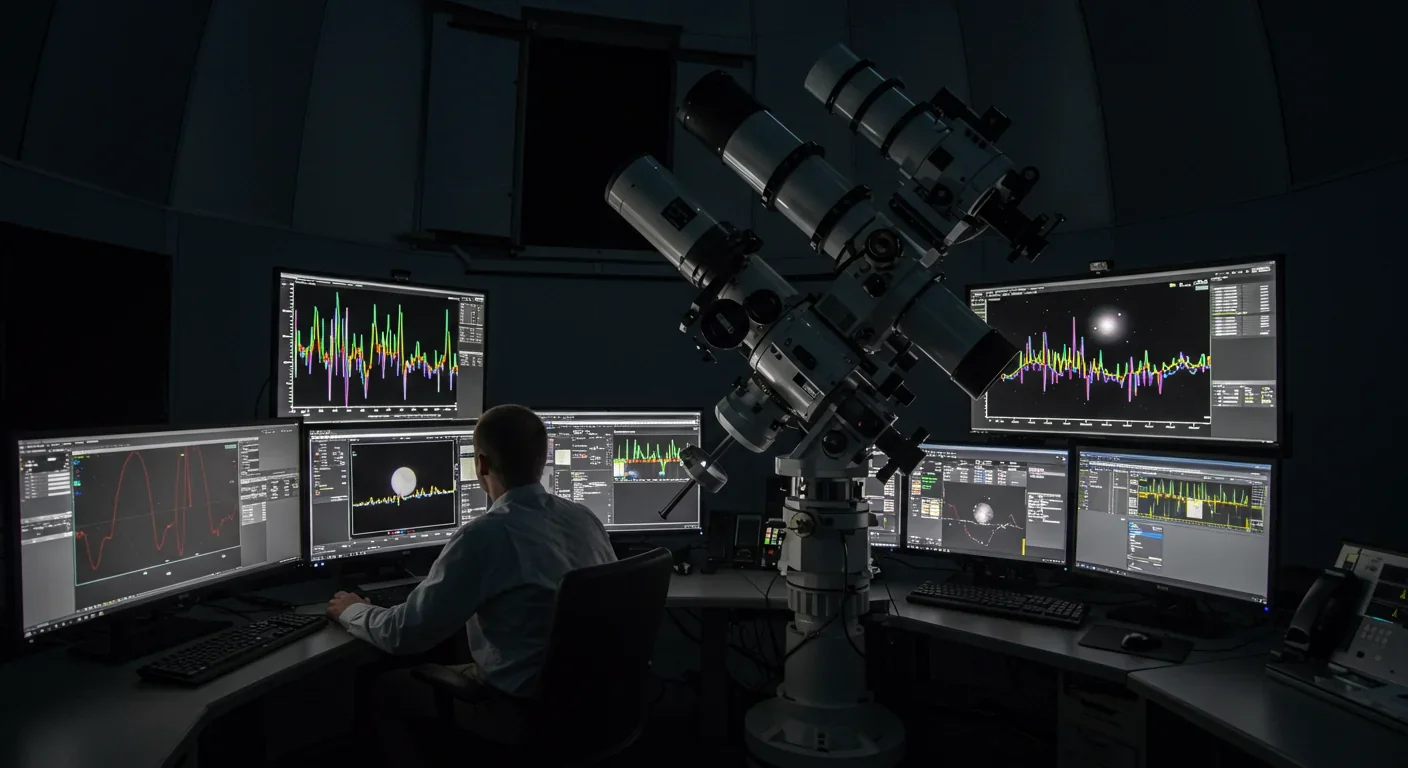
Over 80% of nearby white dwarfs show chemical fingerprints of destroyed planets in their atmospheres—cosmic crime scenes where astronomers perform planetary autopsies using spectroscopy. JWST recently discovered 12 debris disks with unprecedented diversity, from glassy silica dust to hidden planetary graveyards invisible to previous surveys. These stellar remnants offer the only direct measurement of exoplanet interiors, revealing Earth-like rocky worlds, Mercury-like metal-rich cores, and ev...

Hidden mold in homes releases invisible mycotoxins—toxic chemicals that persist long after mold removal, triggering chronic fatigue, brain fog, immune dysfunction, and neurological damage. Up to 50% of buildings harbor mold, yet most mycotoxin exposure goes undetected. Cutting-edge airborne testing, professional remediation, and medical detox protocols can reveal and reverse this silent epidemic, empowering individuals to reclaim their health.

Data centers consumed 415 terawatt-hours of electricity in 2024 and will nearly double that by 2030, driven by AI's insatiable energy appetite. Despite tech giants' renewable pledges, actual emissions are up to 662% higher than reported due to accounting loopholes. A digital pollution tax—similar to Europe's carbon border tariff—could finally force the industry to invest in efficiency technologies like liquid cooling, waste heat recovery, and time-matched renewable power, transforming volunta...

Transactive memory is the invisible system that makes couples, teams, and families smarter together than apart. Psychologist Daniel Wegner discovered in 1985 that our brains delegate knowledge to trusted partners, creating shared memory networks that reduce cognitive load by up to 40%. But these systems are fragile—breaking down when members leave, technology overwhelms, or communication fails. As AI and remote work reshape collaboration, understanding how to intentionally build and maintain ...
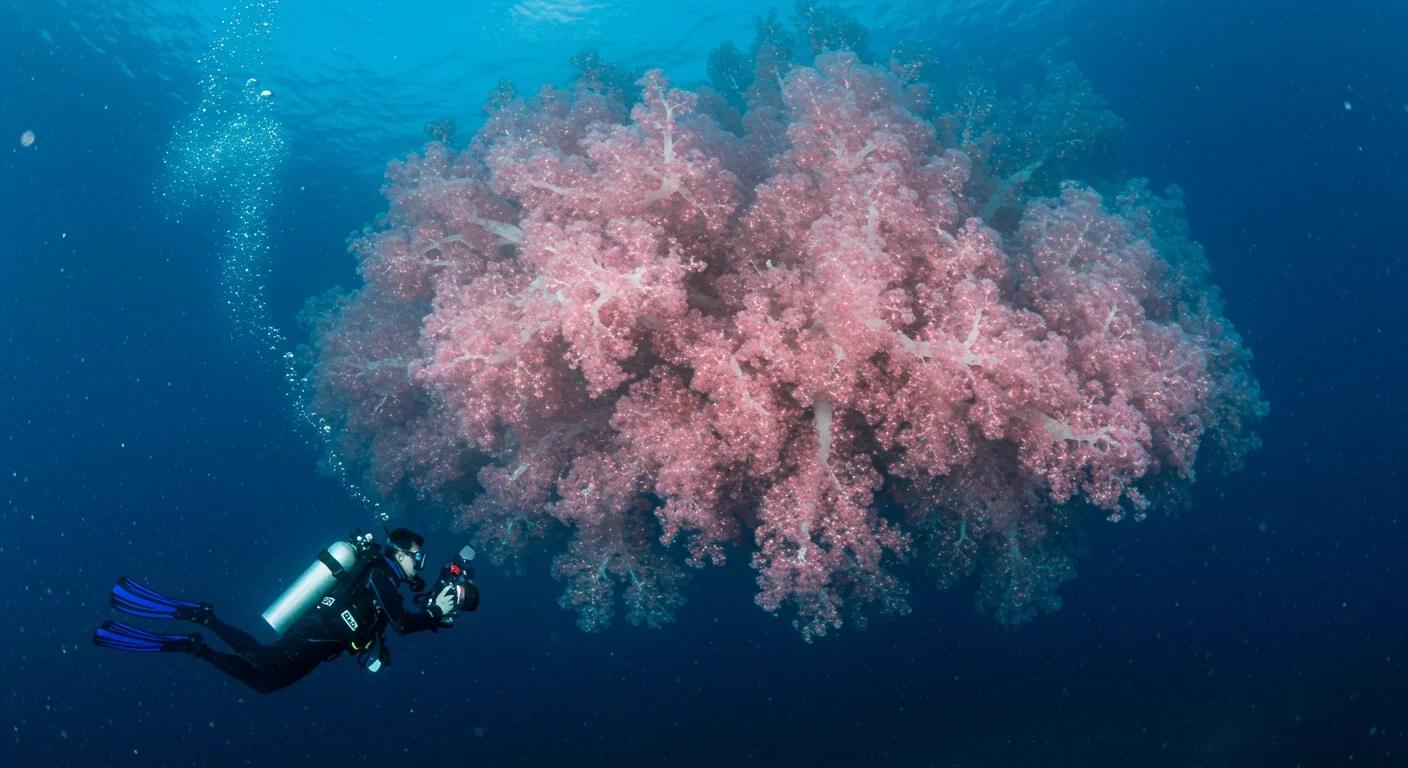
Mass coral spawning synchronization is one of nature's most precisely timed events, but climate change threatens to disrupt it. Scientists are responding with selective breeding, controlled laboratory spawning, and automated monitoring to preserve reef ecosystems.

Your smartphone isn't just a tool—it's part of your mind. The extended mind thesis argues that cognition extends beyond your skull into devices, AI assistants, and wearables that store, process, and predict your thoughts. While 79% of Americans now depend on digital devices for memory, this isn't amnesia—it's cognitive evolution. The challenge is designing tools that enhance thinking without hijacking attention or eroding autonomy. From brain-computer interfaces to AI tutors, the future of co...

Transformers revolutionized AI by replacing sequential processing with parallel attention mechanisms. This breakthrough enabled models like GPT and BERT to understand context more deeply while training faster, fundamentally reshaping every domain from language to vision to multimodal AI.